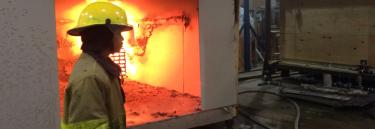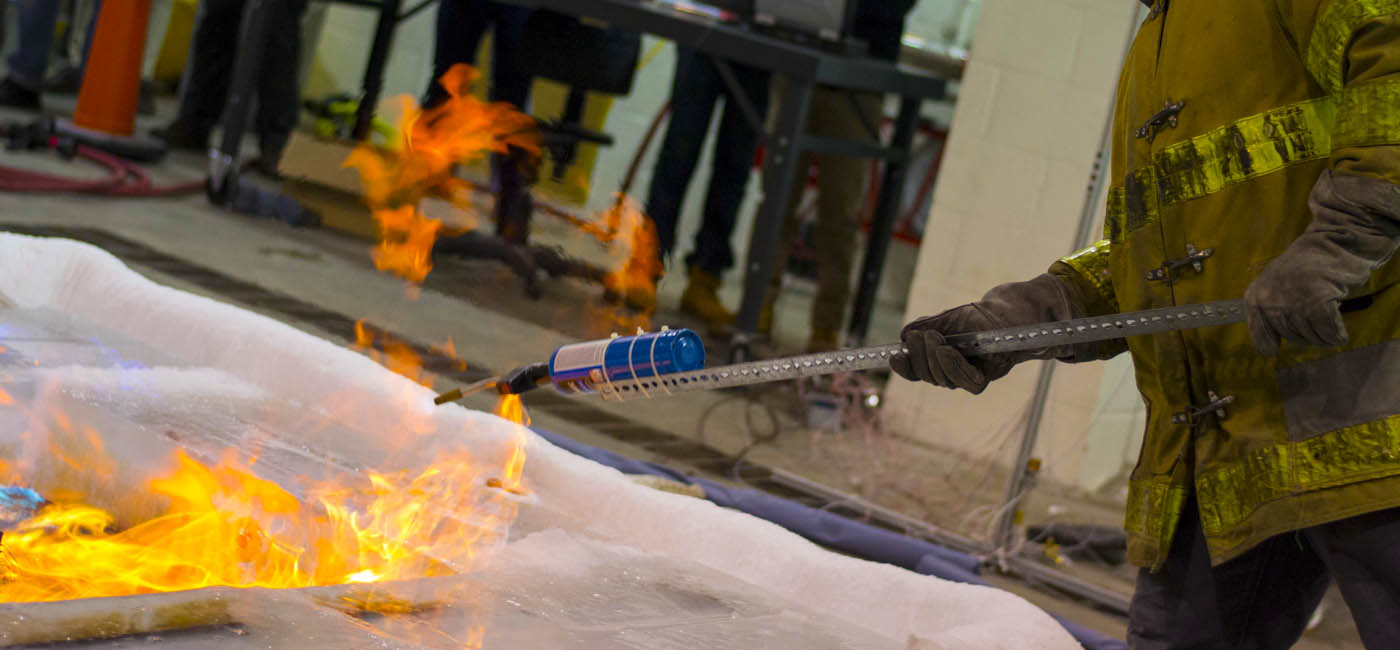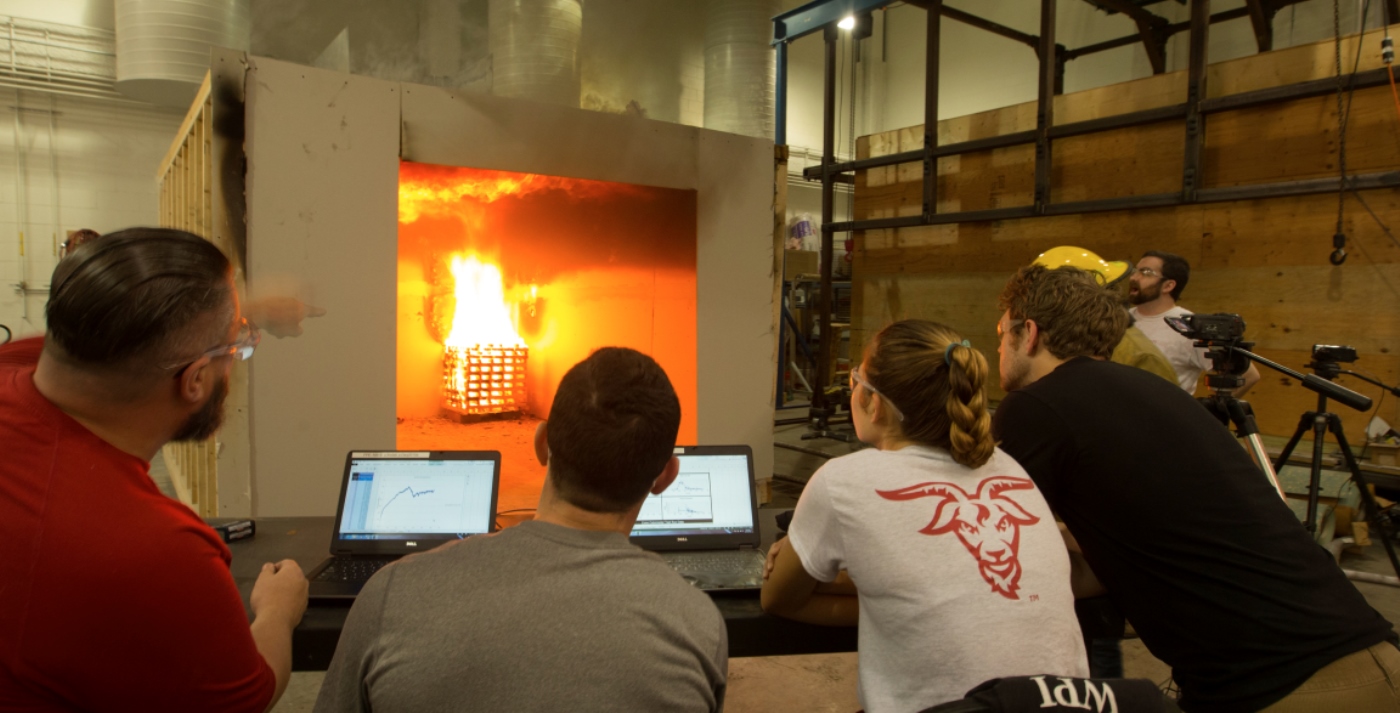The centerpiece of the lab is a 6-megawatt calorimeter that functions in much the same way as the cone calorimeter, but on a significantly larger scale. The calorimeter’s large hood, 6 by 6 meters, is located 6 meters above the floor. That creates a 6-meter cubic volume where assemblies of various configurations can be tested. With the lab’s controlled propane supply, researchers can create small- to very large fires that can be used to evaluate the reaction of assemblies to fires of varying intensities.
“The space works well for large-scale burns because its air diffusers neutralize air currents, letting the fires behave naturally without wind effects,” says Borth. “For our crude oil ReFluxer project, we were able to scale up from a 10-centimeter burner to a 70-centimeter burner.” The team is now preparing for large-scale field trials at the U.S. Coast Guard’s Little Sand Island research facility in Mobile, Ala.
Dembsey notes that the lab is ideal for testing not only larger samples of materials, but also how those materials are structured.
“The large hood is frequently used for industry projects that involve the study of fire spread behavior in assemblies or systems,” says Dembsey. “One research team recently burned a mock-up of a railway car, while other teams have burned an exterior cladding system and a soft wall shelter. In all these projects, the clients were able to learn key details of system behaviors, which they then used to improve fire safety.”
The Performance Lab will also play a vital role in a research project led by Brian Meacham, associate professor of fire protection engineering. The work is part of a study, funded by a $1 million award from the Department of Homeland Security, of fire performance of interior and exterior green building features. Meacham’s team recently constructed a large test rig that can simulate a two-story timber house. They will construct test structures within the rig using three different framing methods and expose them to fires of up to 4 megawatts in intensity to gather data on temperature, heat flux, and fire induced strains.
As preparations continue for those large-scale burns, the fundamentals and performance labs, which are now under the direction of Raymond Ranellone ’11, a 2014 graduate of WPI’s FPE MS program, are being put to good use, Dembsey says. “The FPE labs at Gateway are home to innovative research on a daily basis, from large initiatives to student projects and collaborations with industry. These facilities have truly been a game changer for WPI.”
First Published in WPI Research, 2017 edition


